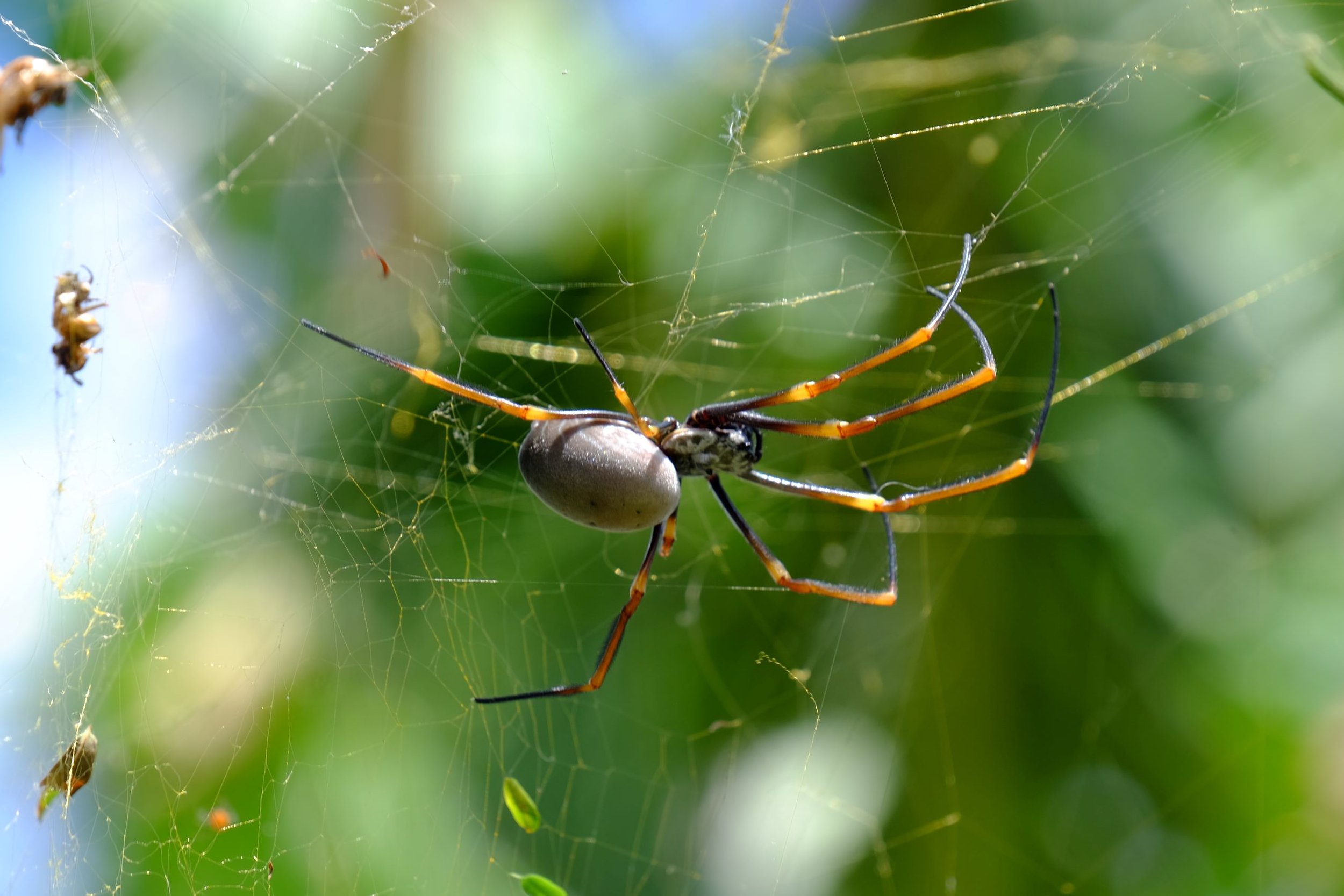
In my Garden
The Wildlife Edition
All of the creatures below I’ve seen and photographed in my garden. If you build it they will come!
Insects and Spiders
Blue Banded Bee
Amegilla cingulate
This colourful little native Australia is a solitary bee. Males roost overnight and females build individual nests in clay soils (but often next to each other - like a little village! Blue banded bees are great buzz pollinators: lots of our native flowers need to be shaken in order to release their pollen. Tomatoes also benefit from buzz pollination.
Teddy Bear Bee
Amegilla bombiformis
These Australian natives are closely related to the blue banded bee, live in similar hives and are also great buzz pollinators. Both of these bees I’ve seen on my blue ginger.
European Honey Bee
Apis mellifera
European honey bees are introduced but are very common here - they’re the kind of bee you were probably stung by as a kid. They live in hives - often kept by bee keepers to harvest honey. They are a main pollinator of our crops and wildflowers, however some wildflowers need buzz pollination (see the native bees above) and the European honey bee can’t do this, they take the pollen but don’t successfully pollinate the flower.
Large Brown Mantid
Archimantis latistyla
Praying mantis look exactly like aliens no? They are great to have in your garden as they are predatory and will eat other ‘pests’ (they also eat other good guys, but we can forgive them for that). Read a little more about them in my garden here.
Australian TigerDragonfly
Ictinogomphus australis
Dragonflies are mosquito eating machines! Do you need another reason to want them in your garden? They catch their prey while flying and can fly in all different directions. Ancient dragonfly fossils had wing spans up to two feet!
Australian Crab Spider
Thomisus spectabilis
These funky looking spiders are often found on flowers, waiting to ambush pollinating insects. They are usually white but can appear yellow and despite their small size, they have been known to cause painful bites.
Hoverfly
Syrphidae Family
Hoverflies are so named because they hover! Extremely well in my opinion. They stay practically stationary in one spot before zipping somewhere else to hover there for a few moments. They’re less than 10mm long and hard to see but they are great pollinators and on top of that, their larvae enjoy chowing down on aphids.
Golden Orb - Weaver Spider
Nephila sp.
Admittedly no-one LOVES getting caught in spider webs, but it’s hard to find space for your web when you’re building a spacious home you don’t plant on leaving. Golden Orb spiders webs can be up to 1m in diameter and are spun out of yellow silk. They are opportunistic feeders and will eat most things they catch. If they aren’t hungry, they’ll wrap it up for later. The females grow up to 4 cm but the males are a maximum of 6 mm! Whilst their bite can hurt, they are harmless to humans.
Birdlife
Magpie
Cracticus tibicen
Magpies get a bad rap for defending their nests in spring (cable ties on bike helmets anyone?). If they live in your yard though, they get to know you and recognise that you aren’t a threat. They love to forage in your lawn and are great at keeping grub numbers under control. Plus they are songbirds and their warbly song is one of the pretties around.
Butcher Bird
Cracticus torquatus
Butcher birds are related to magpies and have an equally pretty song. They have also been known to swoop but again, will get to know you, and looking at the hook on the front of their beak I’m on the make friends side. They prey on insects and slightly larger creatures - I’ve seen one have a good go at a rat.
Rainbow Lorikeet
Trichoglossus moluccanus
Rainbow lorikeets are aptly named parrots who feed on pollen and nectar. Their tongue actually resembles a paintbrush which helps them get their food!
Noisy Miner
Manorina melanocephala
Noisy miners are personality plus! People often confuse them with the introduced common miner, but these guys are native. I’ll admit they’re bullies, relentlessly defending their territory and chasing others off, but their antics are fun to watch. They’re honey eaters, and love feeding on the nectar in grevillias and my cassava.












